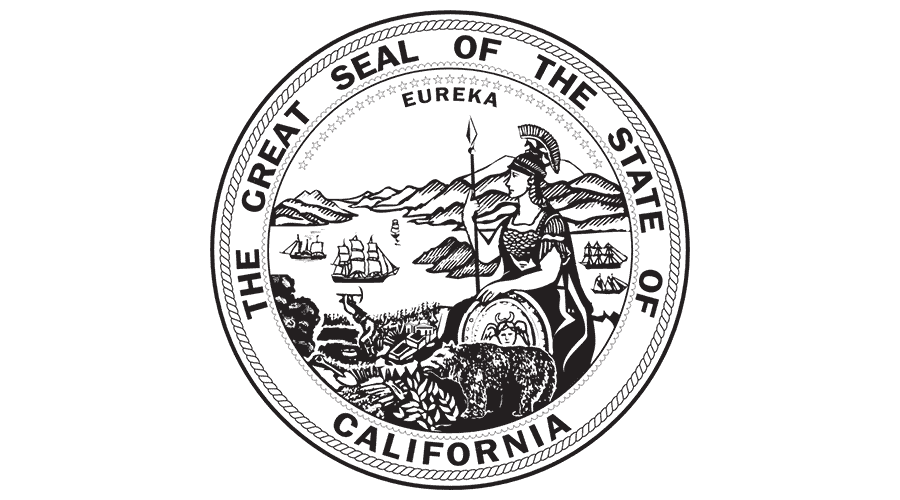






5-Star Service, Trusted & Loved by Hundreds
Your Appraiser Search Ends Here
Your Appraiser Search Ends Here
.avif)

Nationwide Coverage – Appraisals Anywhere in the US

Get it done Onsite or Online

Any Asset, Covered

Defensible for Any Purpose
Frequently Asked
Questions
No Frequently Asked Questions Found.
The fundamental principle behind estate tax involves assessing the total value of an individual's estate at the time of their passing. As of 2023, the federal estate tax exemption stands at $12.92 million for individuals and $25.84 million for married couples, meaning estates below these thresholds typically avoid federal taxation. However, the landscape becomes more complex with state-level estate taxes, which may have significantly lower exemption limits.
Calculating estate tax involves a multi-step process that begins with determining the gross estate value. This comprehensive valuation includes diverse assets such as residential properties, financial accounts, investment portfolios, life insurance policies, and personal valuables like artwork or jewelry. After establishing the gross value, specific deductions are applied, including outstanding debts, funeral expenses, and estate administration costs.
The resulting taxable estate is then subject to progressive tax rates, where the tax percentage increases proportionally with the estate's total value. This intricate system underscores the importance of strategic estate planning. Individuals can potentially minimize tax liability through carefully considered approaches like strategic asset gifting, establishing trusts, or making charitable contributions.
While estate tax may seem daunting, it serves as a mechanism for wealth redistribution and government revenue generation. Proactive planning and professional guidance can help individuals navigate these complex regulations, ensuring a more efficient transfer of assets to intended beneficiaries while potentially reducing tax burdens.
When a loved one passes away, the executor faces the intricate task of determining the estate's total value precisely at the date of death. A professional appraisal becomes indispensable in this process, offering an objective and defensible valuation that meets strict IRS requirements. This detailed assessment helps prevent potential legal complications and ensures accurate tax reporting.
The valuation process goes beyond mere number-crunching. It provides a clear snapshot of an estate's fair market value, which is crucial for calculating potential tax liabilities. Different types of assets—from real estate and business interests to personal property and investments—require specialized expertise to evaluate accurately.
Importantly, these appraisals can reveal potential tax-saving opportunities. Skilled appraisers can identify valuation discounts for specific assets, potentially reducing the overall tax burden. This might include considerations for minority ownership interests, lack of marketability, or other nuanced financial factors that can impact an estate's taxable value.
For families navigating the emotional challenges of estate settlement, a professional appraisal offers transparency and objectivity. It provides a neutral foundation for asset distribution, helping to minimize potential conflicts among heirs and ensuring a fair assessment of the estate's worth.
Beyond immediate tax implications, these appraisals serve as a critical tool for long-term financial planning. They provide valuable information for future decision-making, helping families and financial advisors develop strategic approaches to estate management and potential asset transitions.
An antique artwork appraisal represents a meticulous professional evaluation of historically significant artworks, typically created over a century ago. This comprehensive assessment goes beyond simple price determination, delving into the intricate layers that define an artwork's true value and cultural importance.
The process involves a nuanced examination of multiple critical factors. Experts carefully analyze the artwork's authenticity, scrutinizing intricate details that distinguish genuine pieces from replicas. Provenance tracking becomes paramount, tracing the artwork's ownership history to establish its unique narrative and potential historical significance.
Condition assessment plays a crucial role in the appraisal, with professionals examining every aspect of the artwork's physical state. They evaluate potential restoration work, assess preservation quality, and document any wear or potential damage that might impact the piece's overall value.
Market dynamics form another essential component of the appraisal. Appraisers remain attuned to current art market trends, recent auction results, and shifting collector interests that can dramatically influence an artwork's monetary worth. They apply sophisticated comparative analysis techniques, examining similar pieces to contextualize the artwork's potential market value.
Beyond monetary considerations, these appraisals offer deeper insights into an artwork's artistic and cultural significance. Experts explore the piece's historical context, artistic movement, and potential influence, providing a comprehensive understanding that transcends mere financial evaluation.
The ultimate goal of an antique artwork appraisal is to deliver a precise, well-researched assessment that serves multiple purposes—from insurance documentation and estate planning to potential sale or donation. It represents a critical tool for collectors, museums, and art enthusiasts seeking to understand and preserve cultural heritage.
Digital antique artwork appraisals have revolutionized the valuation process, offering art enthusiasts and collectors a convenient and professional method for assessing valuable pieces. Modern online appraisal techniques leverage advanced technology to provide accurate and comprehensive evaluations without requiring physical presence.
Professionals typically conduct these assessments through high-resolution photographs, detailed descriptions, and comprehensive provenance documentation submitted electronically. This approach allows expert appraisers to carefully examine an artwork's condition, historical significance, and potential market value with remarkable precision.
Interactive online appraisal sessions have emerged as an innovative option for those seeking more dynamic assessments. Using video conferencing platforms, appraisers can engage directly with clients, enabling real-time examination of intricate details, textures, and potential areas of interest that static images might not fully capture.
The digital appraisal process offers significant advantages, including flexibility, time efficiency, and accessibility. Clients can receive professional insights from the comfort of their home, eliminating geographical constraints and streamlining the valuation experience. Whether preparing for sale, insurance, or personal knowledge, online artwork appraisals provide a sophisticated and reliable solution for understanding the true value of antique art pieces.
Antique artwork appraisers represent specialized professionals who offer nuanced expertise across diverse art categories. These professionals bring unique skill sets tailored to specific art domains, ensuring comprehensive and accurate valuation of historical and collectible pieces.
Fine art appraisers concentrate on high-value artworks like paintings, sculptures, and limited edition prints. They leverage deep art historical knowledge, understanding complex market dynamics and artistic movements. Their expertise proves critical for evaluating works from renowned artists and significant artistic periods.
Decorative arts appraisers focus on functional and aesthetic objects beyond traditional fine art. Their evaluations encompass ceramics, furniture, textiles, and glassware, considering both aesthetic qualities and historical significance. These professionals possess broad knowledge spanning multiple decorative styles and historical periods.
Regional art appraisers specialize in artwork representing specific cultural and geographical contexts. They understand local artistic traditions, materials, and techniques that might escape generalist appraisers. Their insights prove invaluable for artworks with localized significance that may not have broader market recognition.
Restoration and conservation experts, while not traditional appraisers, play a crucial role in artwork valuation. They assess physical condition, potential restoration needs, and factors that might impact market value. Their technical understanding helps collectors and owners make informed preservation decisions.
Historical art appraisers delve into pieces with significant contextual importance. They integrate historical research with valuation techniques, providing deeper insights into artworks connected to specific events, cultures, or influential figures. Their approach transforms artwork evaluation from mere monetary assessment to comprehensive cultural interpretation.
Each appraiser type brings distinct perspectives, ensuring comprehensive and nuanced artwork valuation across different domains and artistic expressions.
Understanding the value of antique artwork extends far beyond simple price estimation. Professional appraisals serve critical functions across multiple domains, providing comprehensive insights that protect and inform art collectors and owners.
Insurance protection represents a primary motivation for obtaining an artwork appraisal. Accurate valuations ensure comprehensive coverage, enabling owners to receive appropriate compensation in cases of theft, damage, or loss. A precise, current appraisal becomes a crucial document that streamlines potential insurance claims and safeguards significant financial investments.
Tax considerations also underscore the importance of professional artwork appraisals. When donating pieces valued over specific thresholds, certified appraisals become essential for claiming legitimate tax deductions. These professional assessments provide authoritative documentation that substantiates fair market value, helping collectors navigate complex IRS regulations while maximizing potential tax benefits.
Estate planning represents another critical context where artwork appraisals prove indispensable. Executors rely on precise valuations to facilitate equitable asset distribution, particularly when managing complex inheritance scenarios. Comprehensive appraisals help prevent potential disputes among heirs by providing transparent, professional assessments of artwork values.
Provenance analysis during appraisals can dramatically influence an artwork's market value. Professional evaluators examine an item's historical ownership, artistic significance, and contextual background, offering insights that extend well beyond monetary worth. These nuanced assessments can reveal hidden historical value and potential future appreciation.
Strategic decision-making also benefits substantially from professional artwork appraisals. Collectors gain valuable market intelligence that informs potential purchasing, selling, or investment strategies. In a dynamic art market, these expert evaluations provide critical context for understanding current trends and potential future value trajectories.
Ultimately, professional artwork appraisals serve as comprehensive tools for risk management, financial planning, and cultural preservation. By providing authoritative, multi-dimensional assessments, they empower art owners to make informed decisions that protect and maximize their valuable collections.
What is an Antique Artwork Appraisal?
An antique artwork appraisal is a professional evaluation process that determines the value of a piece of art that is considered to be an antique, typically over 100 years old. This process not only considers the artwork's historical significance and rarity but also analyzes its provenance, condition, and market demand. Qualified appraisers utilize their expertise, industry standards, and recent sales data to arrive at a fair market value, making it an essential step for anyone looking to understand the worth of their antique pieces, especially in the context of gifting or estate planning.
Appraisals for antique artwork can have significant implications for tax considerations, particularly when transferring ownership through gifts or estates. For gift tax purposes, the appraised value helps to establish the fair market value at the time of the transfer, allowing for proper reporting and compliance with tax regulations. In the case of estates, accurate appraisals are crucial for establishing the total worth of the estate, which influences the estate tax liability. Understanding the nuances involved in antique artwork appraisals—such as how to differentiate between aesthetic value and financial investment—can empower individuals to make informed decisions regarding their cherished art collections.
Why is Antique Artwork Appraisal Important for Gift or Estate Tax?
Antique artwork appraisals play a crucial role in determining the fair market value of art pieces that may be gifted or passed down through an estate. Accurately assessing the value is essential for taxation purposes, as the IRS requires that any transfer of art, whether as a gift or part of an estate, be reported at its fair market value. An appraisal provides an objective evaluation, ensuring that the value assigned aligns with current market conditions and comparable sales.
A professional appraisal also helps prevent disputes that can arise between beneficiaries and the estate. In many cases, heirs may have differing opinions on the value of an antique artwork, leading to potential conflicts and complications in the settlement process. By obtaining a certified appraisal, estate executors can provide a clear and unbiased assessment, making it easier to divide assets fairly and mitigate any potential legal issues.
Furthermore, having an up-to-date valuation of antique artworks can aid in making informed decisions regarding financial planning and insurance. For individuals considering gifting artwork, understanding its value can impact their overall gift tax liabilities. Similarly, estates benefit from having current appraisals to ensure that artworks are properly insured, safeguarding against potential losses and preserving family heritage while navigating the complexities of tax obligations.
Understanding the Value of Antique Artwork
Antique artwork holds significant historical and cultural value, making its appraisal a nuanced process. The age, artist, provenance, and condition of the piece all play crucial roles in determining its worth. Appraisers utilize a combination of market analysis, historical data, and expertise to ascertain the artwork's fair market value, which is essential for both gifting and estate tax calculations. Understanding these factors provides clarity on how antique artwork is assessed in various contexts.
Gift and estate taxes can dramatically influence decisions regarding the transfer of antique artworks, requiring accurate appraisals to determine taxable value. In many jurisdictions, artworks valued over a certain threshold may require professional evaluations to ensure compliance with tax regulations. Therefore, a certified appraisal can not only establish the value needed for tax reporting but also protect against potential disputes or audits that may arise later on. Proper documentation through appraisal can guide proper financial planning and estate management.
It's also important to recognize that the antique artwork market can be complex, with trends and values fluctuating over time. This makes it imperative for property owners to have their artwork appraised regularly to reflect any changes in market conditions. Engaging with accredited appraisers who specialize in antique art ensures that the valuation process takes into account the latest trends, sales data, and comparative sales to deliver the most accurate appraisal possible. Such diligence serves not only tax purposes but enhances the appreciation of the artwork's significance within personal and familial narratives.
Factors Influencing the Value of Antique Artwork
The value of antique artwork is influenced by several key factors, including the artist's reputation, provenance, and historical significance. Established artists who are recognized in the art community tend to have their works valued higher, as their pieces are often seen as more desirable or collectible. Additionally, the provenance, or history of ownership, can significantly affect an artwork's marketability and worth. A well-documented history linking the piece to notable individuals, exhibitions, or significant events can enhance its value dramatically.
Another critical consideration is the condition of the artwork. The presence of damage, fading, or improper restoration can detract from its appeal, possibly leading to a lower appraisal value. Conversely, artworks that have been well-preserved or restored by reputable conservators often attract higher prices. Collectors and appraisers alike prioritize artwork that is intact and shows minimal signs of deterioration, as this is indicative of its ability to maintain value over time.
Furthermore, market trends, rarity, and cultural context play significant roles in determining the value of antique artwork. Market fluctuations can be influenced by factors such as collector interest in specific styles, time periods, or artists, and these trends can shift over time. The rarity of a particular piece, whether due to limited production or unique features, can also drive up demand and pricing. Understanding these factors is essential for accurately assessing the value of antique artwork, especially when considering implications for gifting or estate tax valuation.
How to Find a Qualified Appraiser for Antique Artwork
Finding a qualified appraiser for antique artwork can significantly impact the accuracy and trustworthiness of the valuation. Begin by seeking appraisers who hold certifications from recognized institutions, such as the American Society of Appraisers or the International Society of Appraisers. These organizations provide guidelines and standards that help ensure the appraiser is knowledgeable about antique artworks and understands market trends specific to this niche. When interviewing potential appraisers, inquire about their experience with similar pieces, as specialized knowledge can provide a more precise valuation.
Additionally, consider reviewing the appraiser's portfolio and past appraisal reports to gauge their expertise and the quality of their work. It’s also advisable to check for references and client reviews, which can give insight into their professionalism and service quality. A qualified appraiser should be transparent about their methods and willing to explain the appraisal process, including how they determine the fair market value. By choosing an appraiser with a strong reputation and relevant experience, you can ensure that the valuation of your antique artwork is as accurate and reliable as possible.
The Antique Artwork Appraisal Process
The antique artwork appraisal process is a crucial step for anyone looking to understand the value of their pieces for potential gift or estate tax purposes. Initially, a qualified appraiser will conduct comprehensive research to determine the artwork's provenance, historical significance, and market trends. This rigorous approach not only evaluates the physical condition and authenticity of the piece but also considers its relevance within the broader art market, ensuring an accurate and well-founded valuation.
During the appraisal, appraisers often utilize comparative analysis, studying recent sales of similar pieces to gauge fair market value. They take into account various factors including artist reputation, medium, size, and rarity, which significantly influence the valuation. Furthermore, the location where the artwork is to be sold may affect its market positioning, making geographical considerations an essential part of the overall evaluation process.
Once the appraisal is complete, the appraiser provides a detailed report that articulates the findings, including a comprehensive description of the artwork, its estimated value, and any necessary supporting documentation. This report serves not only for tax purposes but can also be vital for insurance coverage and potential resale scenarios. Ultimately, understanding the appraisal process empowers individuals to make informed decisions regarding their antique artworks, preserving their cultural heritage and financial significance.
Documentation Needed for Antique Artwork Appraisals
When preparing for an antique artwork appraisal, it is essential to collect and present comprehensive documentation that supports the artwork's history and provenance. Important documents may include sales receipts, previous appraisal reports, and any certification or authentication paperwork that attests to the piece's origin or artist. Additionally, photographs that reflect the condition and details of the artwork can enhance the appraisal process, providing the appraiser with a clearer understanding of the item’s significance and market value. This information plays a pivotal role in establishing the context of the artwork within the art market.
In some cases, personal anecdotes or family histories related to the artwork can also be valuable for the appraisal process. These narratives not only add depth to the artwork’s story but may also unveil unique characteristics that influence its value. In preparation for an appraisal, ensure that all relevant documentation is organized and accessible, as this will facilitate a more efficient and accurate assessment. Ultimately, thorough documentation not only supports the value of the artwork during gift or estate tax evaluations but may also contribute to future decisions regarding insurance or potential sales.
Common Misconceptions About Antique Artwork Valuation
One common misconception about antique artwork valuation is that the age of the piece directly correlates with its value. While age can certainly play a role, many other factors such as provenance, condition, and market demand significantly influence the worth of an artwork. A well-preserved piece from a less renowned artist may fetch a higher price than a deteriorating work by a celebrated master, highlighting the importance of a comprehensive evaluation rather than just a superficial glance at age.
Another prevalent myth is that all antique artwork appraisals are the same and produced by any general appraiser. In reality, assessing antique artworks requires specialized knowledge in art history, techniques, and the specific market trends influencing the art world. Qualified appraisers often have certifications and extensive experience that allow them to discern subtle differences in value that may not be apparent to the untrained eye, underscoring the significance of hiring an expert in the field.
Additionally, many people believe that antique artworks are universally valuable. The truth is that value can vary widely based on factors such as the artist's recognition, the piece's historical context, and its aesthetic appeal. Thus, putting too much emphasis on general perceptions of value can lead to inaccurate assumptions when considering items for gift or estate tax purposes. Proper appraisal not only provides a more accurate valuation but also assists in understanding the potential implications for taxation and estate planning.
Tax Implications of Gifting Antique Artwork
When it comes to gifting antique artwork, it's essential to understand the tax implications involved. The IRS considers the fair market value of the artwork at the time of the gift to determine any applicable gift tax. If the artwork's value exceeds the annual gift exclusion limit, which adjusts periodically, the donor may be required to file a gift tax return. This process not only ensures compliance with tax laws but also helps preserve the integrity of estate planning strategies.
Estate tax considerations are also crucial for antique artwork. If the artwork is part of a decedent's estate, it will be assessed at its fair market value as of the date of death for estate tax purposes. This valuation plays a pivotal role in determining the overall value of the estate and must align with any prior appraisals conducted during gifting. Accurate appraisals can help mitigate potential tax liabilities and provide transparency during the estate settlement process.
Furthermore, understanding the basis of the artwork – the original purchase price plus any associated costs – is important for calculating potential capital gains tax should the artwork be sold later. If the item appreciated significantly in value, capital gains tax may be incurred on the difference when sold. Properly documented appraisals serve as vital records that inform tax obligations and financial strategies, allowing both donors and beneficiaries to make informed decisions regarding their antique artwork.
Reporting Requirements for Estate Tax and Antique Artwork
When it comes to estate taxes, understanding the reporting requirements for antique artwork is crucial for both heirs and estate executors. The Internal Revenue Service (IRS) mandates that the fair market value of all assets, including artwork, must be assessed at the date of death if the estate exceeds a certain threshold. This valuation is not just a matter of bookkeeping; it can significantly influence the tax liabilities associated with the estate, making a precise appraisal essential for compliance and financial planning.
Antique artwork often presents unique challenges in valuation, as its worth can fluctuate based on historical significance, artist reputation, and market demand. Appraisers consider various factors, including provenance, condition, and previous sales records, to determine its fair market value. This thorough assessment is vital, as providing an accurate estimate can help prevent potential disputes with tax authorities and ensure that the estate is not under or overvalued, which could lead to penalties or excessive tax payments.
In addition to estate tax considerations, antique artwork appraisals can also play a role in gift tax scenarios. When art is gifted, the value of the artwork must be reported for tax purposes, and if the gift exceeds the annual exclusion limit, it may incur a gift tax liability. Therefore, understanding the nuances of these reporting requirements not only aids in compliance but also helps in strategizing around estate and gift planning, ensuring that both natural and financial legacies are preserved appropriately.
How to Prepare for an Antique Artwork Appraisal
Preparing for an antique artwork appraisal begins with gathering comprehensive information about the piece. Collect as much documentation as possible, including purchase receipts, previous appraisals, certificates of authenticity, and any relevant historical data. Understanding the background of the artwork—such as the artist, period, and provenance—can significantly help appraisers in determining its value and context.
Additionally, it is essential to evaluate the artwork's condition prior to the appraisal. Take note of any visible imperfections, such as damage, restoration work, or alterations, as these factors can greatly influence the piece's market value. An organized presentation of the artwork can also aid the appraiser, so consider how it is displayed and whether it might benefit from cleaning or restoration before the appraisal process begins.
Finally, timing can be a crucial element in preparing for an appraisal. Be aware of market trends and art gallery exhibitions that could affect the demand and perceived worth of the artwork. Scheduling your appraisal during active selling seasons or right before major art events can be beneficial, as appraisers may have deeper insights into current market dynamics, thus ensuring a more accurate assessment.
FAQs About Antique Artwork Appraisals and Taxes
Antique artwork appraisals play a critical role when it comes to gift or estate tax considerations. For individuals planning to pass on valuable pieces, an accurate appraisal is essential in determining the fair market value of the artwork at the time of transfer. The IRS requires that the valuation of gifts and estate assets be substantiated by a qualified appraiser, ensuring that the value reported aligns with market conditions. This not only facilitates compliance with tax regulations but also protects the estate from potential audits and penalties by the IRS.
Understanding the nuances of antique artwork appraisals can simplify the tax process significantly. Various factors influence the valuation, such as provenance, condition, and market demand. Additionally, having a professional appraiser with expertise in antique art can provide clarity and legitimacy, especially when disputes arise concerning valuation. An accurate appraisal ultimately provides both peace of mind for the donor or estate executor and appropriate tax reporting, ensuring that the art's historical and cultural importance is respected in the financial realm.
View all Locations
BEST-IN-CLASS APPRAISERS, CREDENTIALED BY:






.svg)










